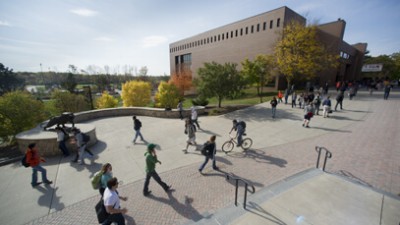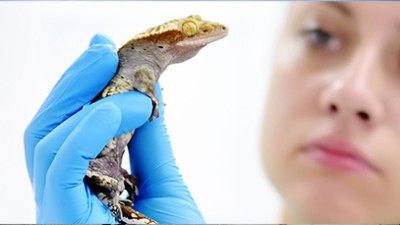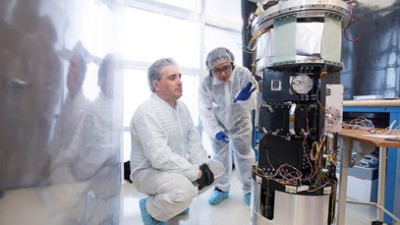News
-
December 13, 2019
![]()
New applied cognitive neuroscience course offered at RIT
Designed for students who want to learn how animals transform light and other radiation into information, the Animal Vision course explores the varied approaches to visually acquiring information employed by animals.
-
December 12, 2019
![large and small satellite dishes.]()
RIT and IAR observe pulsars for the first time from South America
A team from RIT and the Instituto Argentino de Radioastronomía (IAR) upgraded two radio telescopes in Argentina that lay dormant for 15 years in order to study pulsars, rapidly rotating neutron stars with intense magnetic fields that emit notably in radio wavelengths. The project is outlined in a new paper published in Astronomy and Astrophysics.
-
December 12, 2019
![three students wearing lab coats working with pipette.]()
RIT genomics lab, Golisano Autism Center flourishing one year after receiving state grant
WROC-TV talks to Nicole Cavanaugh, a biotechnology and molecular bioscience student, and Larry Buckley, associate dean in the College of Science, about the impact of RIT's genomics lab.
-
December 11, 2019
![three panelists sitting at a table]()
Student Support Services: Mental Health and Wellness
The Inclusive Excellence Initiative at the College of Science invited faculty, staff and students to participate in an open panel discussion about healthy sleep habits.
-
December 4, 2019
![student holding a degree]()
Student to Student: Overcoming obstacles and achieving your goals
When Bilal Zeghum left RIT to help his family relocate, he thought he had met all the requirements for his degree. When he discovered he had not, it didn't stop him from continuing on his path to completing his education and entering a career in his field.
-
December 3, 2019
![exterior shot of home on large property surrounded by trees and water.]()
RIT gifted 177-acre estate to expand research, educational offerings
RIT will use a substantial gift of real estate in Penfield to expand the university’s research and educational offerings in ecology, agriculture, sustainability and other fields. Amy Leenhouts Tait and Robert C. Tait have gifted to the university their 177-acre property, which will be dedicated as the Tait Preserve of RIT.
-
December 3, 2019
![close-up of syringe.]()
RIT researchers turning to photodynamic therapy to beat cancer
WROC-TV talks to Maureen Ferran, associate professor of biology, about a technique to fight human papillomavirus, or HPV.
-
November 21, 2019
![student working at computer monitor]()
Student to Student: Color gamut volume of HDR displays
Fu Jiang discovered the interesting and complex topic of Color Science while taking some courses at RIT. Today, his dissertation research is focused on the Color Gamut Volume of High Dynamic Range (HDR) display.
-
November 20, 2019
![Yellow and purple illustration of black holes colliding.]()
Baby Black Holes May be Orbiting Supermassive Black Holes
Futurism cites research by Richard O’Shaughnessy, assistant professor in the School of Mathematical Sciences.
-
November 18, 2019
![Two researchers wearing cleansuits work on detector equipment.]()
Researchers prepare rocket for launch
A team of RIT researchers is helping launch an experiment above the atmosphere to better understand extragalactic background light, which traces the history of galaxies back to the formation of the first stars in the universe.
-
November 15, 2019
![panel of three female students sitting at a table]()
What Students Wish Faculty Knew
A voluntary panel of students facilitated a valuable discussion during the Inclusive Excellence Initiative event, "What Students Wish Faculty Knew."
-
November 14, 2019
![group of people stands in front of brick building for photo.]()
Alumni reflect 30 years after Chester F. Carlson Center for Imaging Science opened its doors
The Chester F. Carlson Center for Imaging Science became the only place in the world where students could pursue degrees in the interdisciplinary field of imaging science when it opened its doors in 1989. Thirty years later, alumni returned to campus for a celebration and interactive open house during Brick City Homecoming and Family Weekend.
















